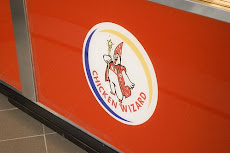At the height of the travel book boom, large bookstores had at least three - and in one famous case, eight - different travel writing sections. First off was your standard, just the facts ma'am, guide books - Central Western East Africa on a Velcrostrap, and similar ilk. Then you had your expansive personal accounts of travel - Five Weeks Down the Murrumbidgee on a Flotilla, and so on. Then there were your journeys of inner discovery - I'm Awful, But Some Guy In The Dominican Republic Thinks I'm Great, stuff like that.
Something all these books had in common was the ability of an average schmuck to gain entree into the most exciting and exotic worlds, provided they could read or afford the talking book. Yet here we are, in 2010, and the New York Times Bestseller List contains three travel books that don't fit in any of these categories. What they all share in common is a love for the familiar and mundane - the previously and heretofore ignored. I speak of course of Bret Kingston's Platform 5/6 at Strathfield, Mary and Geoff Buglebury's Uptown Foodcourts I Have Known and the Blintzmans Guide To Freeways With Pedestrian Walkways That Just Stop At Some Point For No Reason.
Let us begin with Kingston's railway missive. To those who have known it, Platform 5/6 at Sydney's inner western Strathfield train station is notable only for its passable toilet and humble food stand (in whose bain marie the same pluto pup once rested for over 4 years, Kingston informs us). Thankfully this situation is remedied by this wonderful book, which takes us into the rich heritage, both human and material, of this colourful platform. Did you know that Jimmy Barnes once lay here unconscious for 6 hours? Or that 12 pigeons died during its construction, compared to only four for platforms 1/2, 3/4 and 7/8 combined? I still shake my head when I think of the reason, fully laid out in Chapter 3.
Undoubtedly my favourite character from this book is Quite A Long Time, the name Kingston gives to a phantom graffitist who left the tag "Quite A Long Time" on various parts of the platform over a two decade stretch of time. Many platform locals claim to have caught glimpses of him either beginning or ending his scrawl, only to have said sighting cut off by the arrival of their train. Even more mysterious is the fact that the platform's three CCT cameras have never recorded even a trace of the man. Kingston indulges in perhaps overlong speculation as to the meaning of Quite A Long Time, settling on the theory that it refers to the amount of time one spends waiting for trains. Quite A Long Time's spiritual torch was subsequently picked up by Eternity, who expanded the canvas to the rest of Sydney, and the public transport referent to buses, ferries and taxis.
Speaking of cabs, next off the rank is the Blintzman Guide's latest plaintive offering, known by its acronym GFWPWTJSASPFNR or in cult circles as 'Gefwipwitch Sasperfener'. I challenge any human with a heart to read this and not be moved, moved in fact to wail deep, visceral tears. We learn about the Cahill Expressway onramp at Crows Nest, which invites lost souls to travel a full 1.3 km before cruelling their hopes and sending them back from whence they came. Then there's the beginning of the westbound M4, something only the most foolhardy or fumigated would try to navigate. Our guides reveal the hidden treasures that await those who would travail its 350 odd metres, including a piece of blue tarp of unknown origin, several vintage cigarette butts, and a hardy weed which when boiled, makes an excellent digestive. Hats off to the folks at Blintzmans for another outstanding work.
I must admit I came away with a mixture of awe and revulsion at Geoff and Mary Buglebury's foodcourt tome. The Bugleburys, who are no relation but are considering starting a band together, document in painstaking detail their experiences of a range of indoor eating areas located between Liverpool and Hunter St in the city. I hope I am not giving too much away in saying that the Bugleburys' greatest accomplishment is referring to each foodcourt as a person - with its own distinctive appearance, personality, social standing and religious beliefs. Raymond is a loner, visited only by a few dozen different people over the course of a year, yet he repays their faith with outstanding meals and an intimate atmosphere. Shelly is a flirt at heart, with her largely male clientele drawn to her dining furniture's seductive curves and a wide offering of oysters and other aphrodisiacs. The revulsion I spoke of earlier was in reference to Pat, a slovenly creature of indeterminate sex, whose leftovers often remain on the table up to three customers later. Pat crowds her space with televisions, poorly drained potplants and garish decorations - yet the crowds keep coming. Just like the soap in Pat's bathroom, this book is indispensable, for anyone seeking to understand modern city worklife.
Each of these books is in its own way unspectacular, workmanlike if you will. But taken together they form an irresistible triumvirate which, for those willing to look, holds the key to the future of literature, society and even travel books. Who dares tell our business elite how to act, if we understand not how they eat? Who could claim to advise on transport policy without at least a cursory knowledge of the pedestrian pitfalls that accompany certain motorways? This knowledge is at times ugly, at times frightening and often beautiful. When the people hunger for knowledge we must give it to them.
Sunday, December 05, 2010
Subscribe to:
Posts (Atom)
